Growing mushrooms is entirely different than growing any other vegetable in your garden. However, it is not such a complicated procedure. If you have all the necessary material, getting organic mushrooms will be simpler than it seems at first sight, and a result will be fantastic.
With low-level of calories and fat, and a high amount of fiber, selenium, and potassium, mushrooms are healthy food for you and your family. Go for it!
Best Mushrooms You Can Grow
White button

Since spores of white buttons grow quickly, I recommend you to start with them if you are a beginner in growing mushrooms. The best thing is that you can plant and grow them indoors throughout the year.
Oysters

You can find oyster mushrooms growing on dying trees, cut logs, or you can grow them on a specialized substrate. They are tasty, with mild seafood flavor. There are a lot of types of these mushrooms, and you should pick out the most delicious one for you and your family:
- Black oysters – Thanks to their bold flavor, they are probably the most popular type of mushrooms for indoor growing.
- White oysters – These pale, mild-flavored mushrooms are well-known for large yields. Grow them on beech, poplar tree, or hornbeam wood and provide humidity from 85 to 90% to get healthy and lush fungi.
- Pearl oyster – I adore these fantastic, lush mushrooms with their mild flavor and the texture of velvet. The best of all is that you can grow them in cardboard packaging.
- Pink oysters – They look pretty exotic, don’t they? Even novices can grow these tropical mushrooms. Provide an adequate container, a high level of humidity, and proper temperatures, and your oysters will give you an abundant harvest.
- Yellow oysters – These brightly-colored mushrooms grow best on sawdust substrate when the temperatures and humidity are high. Unfortunately, you can’t grow them if you live in a region with a dry climate.
- Gray oyster – They grow best from a white substrate, and you need to provide a high level of humidity and enough fresh air for an abundant yield.
The most common mushrooms to grow at home |
|
|
Commercial name |
Latin name |
| Shiitake |
Lentinus edodes |
|
Oyster |
Pleurotus sp. |
| Enoki |
Flammulina velutipes |
|
Matsutake |
Armillaria matsutake |
| White button |
Agaricus bisporus |
|
Lion’s Mane |
Hericium erinaceus |
| Maitake |
Grifola Frondosa |
|
Morel |
Morchella angusticeps |
| Reishi |
Ganoderma lucidum |
Shiitake

Start growing this delicious, meaty type of mushrooms on cut hardwood logs. Except that they are delicious, they will boost your immune system and help you reduce weight.
Reishi

These mushrooms are well-known for their medicinal properties. You can grow them outdoors and expect high yields.
Morel

All parts of these beautiful, pine cone-shaped mushrooms are edible while they are young. Once they become fully mature, you can use just the caps since the stems can be a little bit woody.
After the first year, the harvest will be abundant, and you will enjoy plenty of mushrooms and their meaty texture and nutty, earthy taste.
Maitake

These chicken-textured mushrooms grow on dying tree roots, but you can grow them on a specialized substrate. With their rich flavor, they are probably one of the most beneficial mushrooms in the world.
How to Plan Mushrooms at Home
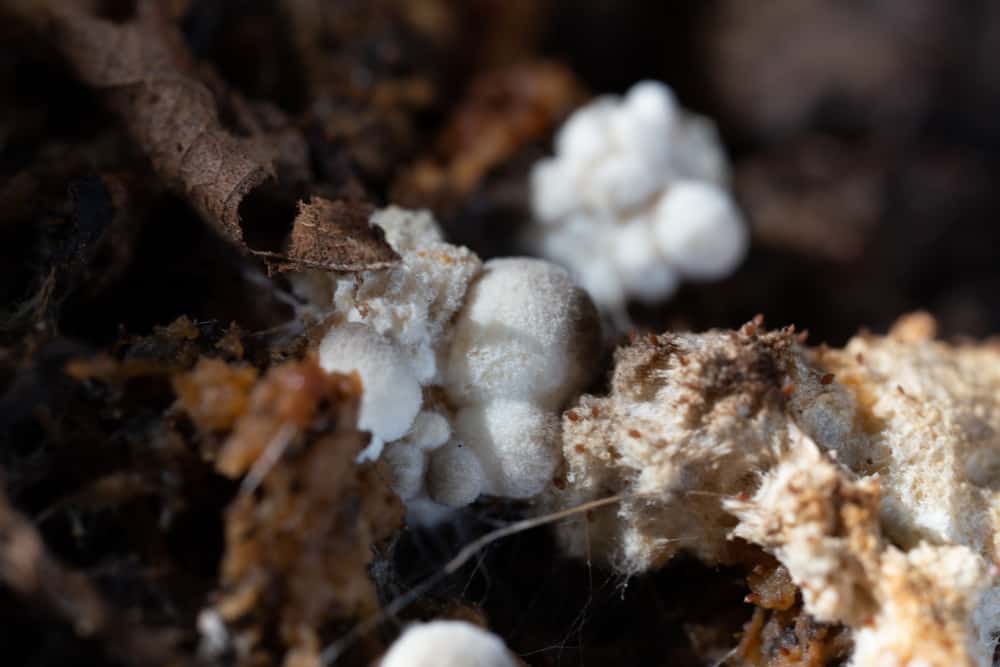
You can’t grow mushrooms from the seeds. They will reproduce through the mycelium, a root-like net of cells. When the conditions in the environment where they live worsen, they release spores which spread around by the wind. Once they found better surroundings, new mushrooms can start growing.
Usually, you should purchase spores to begin growing your mushrooms. Be aware that spores contain no chlorophyll for germination, which means that you need to provide a special substrate for their healthy and vigorous growth.
Depending on the type of mushrooms you have chosen, it can be wood chips, straw, grain, sawdust, gypsum, cardboard, or wooden plugs. After you mix these nutrients with the spores, you will get spawn, some kind of starter for the growth of mushrooms’ mycelium.
Pick out the right type of mushrooms

In the very beginning, you should decide which type of mushrooms you want to grow. The most convenient for growing at home are a white button, oyster, and shiitake.
Keep in mind that they need different growing substrate depending on their different nutritional needs. For example:
- Oysters grow best in coffee grounds or straw
- Shiitakes grow best on sawdust
- White buttons grow best in manure
Grow mycelia inoculant

At first, you should grow mycelia inoculant. You will need about one to three weeks for that. Order an adequate starter culture, add it to sterilized agar tray or nutrient water and keep it in the dark space at the room temperature. As soon as the mycelium grows through, it will colonize the substrate.
Buy adequate mushroom spawn

Spawn is actually a mix of sawdust and mycelium. It is always a better decision than purchasing spores since this way requires less time and effort. You can always cultivate your own spawn, but it can be complicated for novices.
Preparing fruiting substrate
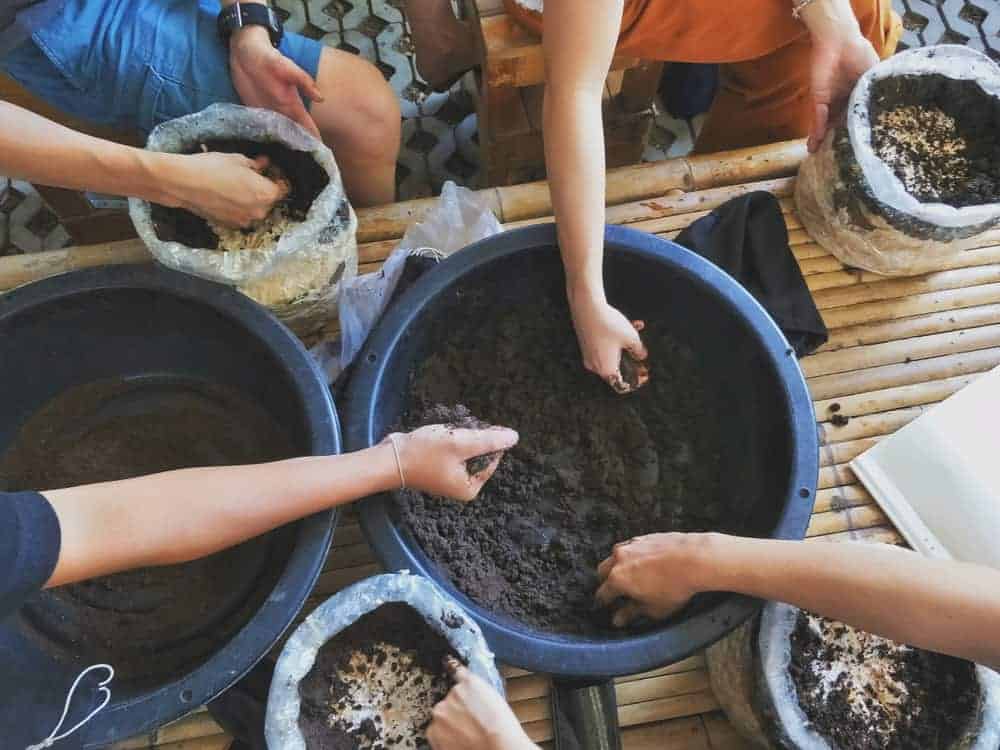
Don’t forget to sterilize the substrate before starting the procedure of growing mushrooms. After putting it into the microwave for two minutes, you will destroy any possible microbes dangerous for the mycelia.
Then add a few spoons of gypsum and one cup of spawn for 20 l of the substrate and press the mix into sterilized plastic buckets with drilled holes.
You need about 2 to 5 of 0.8 inches (2 cm) holes for a bucket of 10 l. It is always an excellent idea to heat the substrate and help the mycelia to spread.
Incubation

Place buckets with the substrate in a dark location for 2 to 4 weeks, depending on the type of mushrooms you grow. The period of incubation is over when you notice that your substrate is fully colonized, which means that white mycelium overtakes the mulch entirely.
Fruiting

Once the mycelium forms little knots and colonizes the substrate, the fruiting stage begins. That is the time to move your buckets to a warm, well-aerated, and humid place.
To avoid all this process and save a lot of time, you can purchase a mushroom kit, which is basically the mycelium which has colonized the substrate. In that case, you just need to wait for the progression of mushroom caps.
The only thing you need to take care of is to prevent overheating by keeping the temperatures from 65 to 70 F (18 – 21 C). If the temperatures are below 60 F (15.5 C), your mushrooms will grow slowly or won’t spawn at all.
How to Care Mushrooms
Space
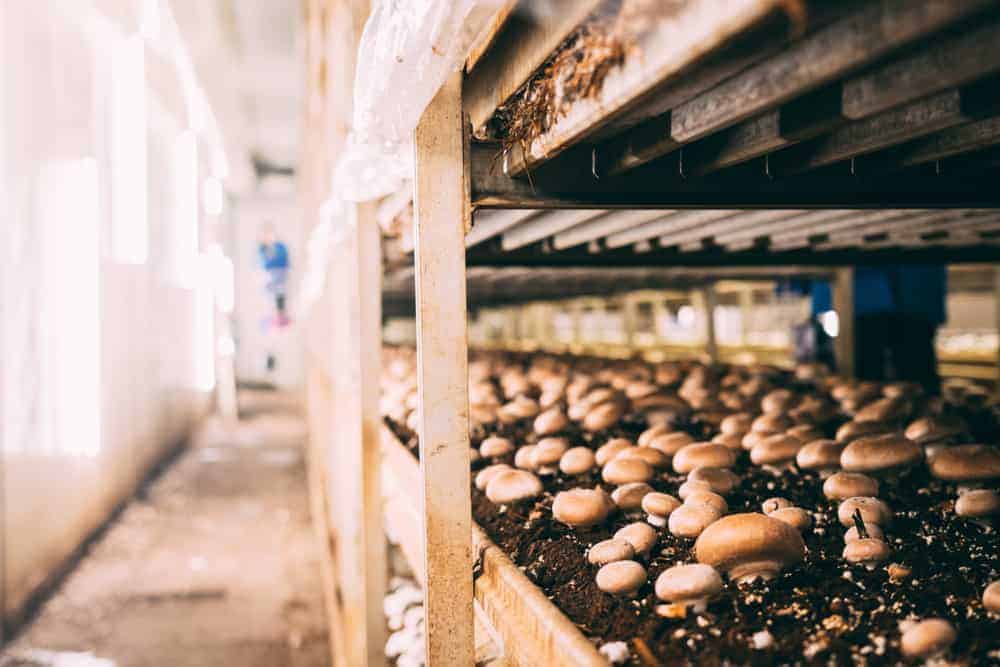
Basically, you can grow your mushrooms even outdoors in the well-prepared ground, but a process of growing will take from six months to two or even three years. Only a controlled indoor environment may offer adequate conditions for fast growth.
Light

Before you decide to grow mushrooms, you need to provide dark and humid conditions to allow them to thrive. In general, they can tolerate some light, but it is better to provide darkness for them.
Usually, an ideal place for growing these fungi at home is a basement. However, you may use even small, indoor spaces such as a place under the sink or shipping container to organize your home production.
Temperatures

The temperature is probably the main factor for mushroom production. Most of the types grow best when the temperatures are from 65 to 70 F (18 – 21 C), without direct drafts or heat.
If you grow mushrooms which require higher temperatures, you may consider using a heating pad until seeing the tiny roots (mycelium). It can raise the temperatures of the soil to 70 F (21 C) and drop them to 60 F (15.5 C) when mycelium appears.
Watering

Rule number one is to keep your mushrooms consistently moist. Spritz them with water regularly. One of the most practical ways is to use some damp cloth to cover the tray and moist it immediately when it dries.
Fertilizing

For a start, you need trays of 14 x 16 inches (35.5 x 40.5 cm) in size and 6 inches (15 cm) deep. Fill them with the proper compost material for mushrooms and inoculate it with spawn.
How to Harvest Mushrooms

Depending on the type of mushrooms you have decided to grow, tiny mushrooms begin sprouting in a week or ten days. In general, you can start harvesting them after a few days or weeks. As soon as they turn upwards and their caps separate from the stems, you can cut their stalk with a sharp knife.
Don’t pull them up to avoid risk damaging young fungi around which are still developing. If you take care of your mushrooms properly, you will get a continuous crop for up to five to six months.
How to Store Mushrooms

You can keep your mushrooms in the fridge for a week or two, but they will change over time and become dry, with dark spots all over the caps.
If you want to use them for a longer period, you need to store them correctly. I can recommend you drying as the most effective way to save your mushrooms for long-term.
Adequately dried, your mushrooms will stay potent for three years. The only thing you need to take care of is to provide a dark, cold, and dry place for storing. On the other hand, stored in the freezer, your mushrooms may last indefinitely.
Reusing the Substrate

There is no need to throw away the substrate you have used for growing your mushrooms. You can actually reuse the same cakes three times after first flushing.
Dry them out for a couple of days, place them back in the chamber, and moist them appropriately. You will probably notice some contaminants in the substrate after the third reuse, and that is the moment when you need to use the new one.
Mushrooms Pests and diseases
Green mold
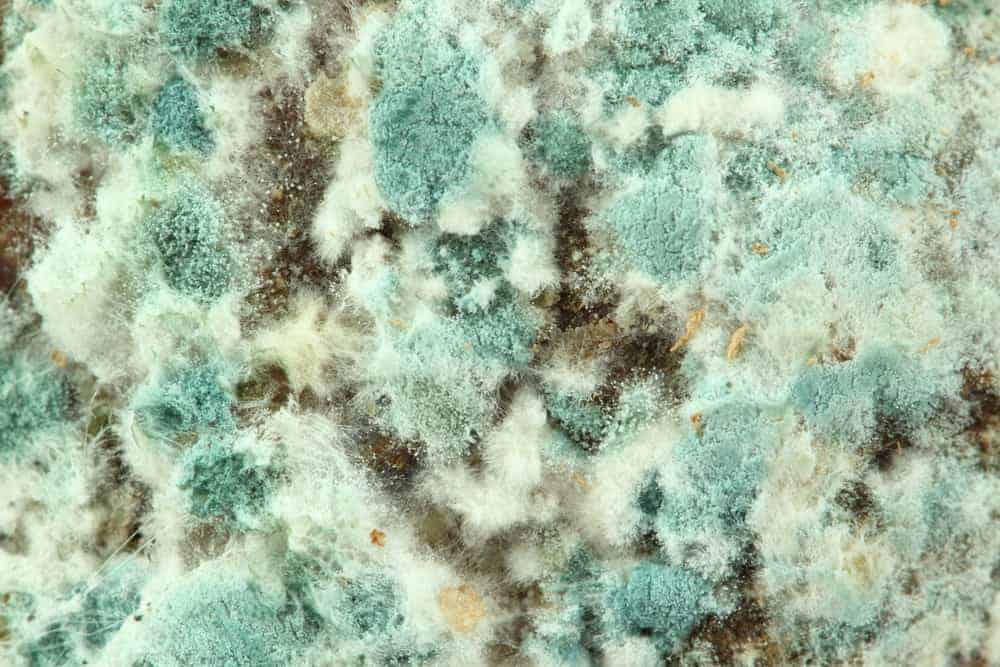
This fungal disease is probably the most destructive one when we are talking about cultivated mushrooms. Once this infection occurs, you will notice a dense layer of white, green, or even brown mycelium on the surface of the casing.
The best way to keep your mushrooms safe is good prevention. Pasteurize compost and sterilize all the tools before using them.
Dactylium diseases

It is possible to notice white, gray, or pink cottony, webbed mycelial growth on the surface of your mushrooms. Once these fungi appear, they will transform your mushrooms in a soft, watery rot. Left untreated, the mold will spread quickly and destroy your yield.
Keep the infection under control by providing excellent sanitation practices and regular monitoring of your trays. Keep them clean and sanitized and remove mushroom debris regularly.
Verticillium spot
This is one of the most severe fungal diseases which can devastate your mushrooms. You can count that you have to deal with those horrible fungi if you spot small stains on the caps of your mushrooms. They will become fuzzy, deformed, and gray, with dead areas on the top.
When the infection becomes highly severe, it will cause a ‘dry bubble,’ deformation, which causes the occurrence of gray masses in trays. The causes are usually infected equipment or flies. Use salt to dry and destroy bubbles and prevent spreading of spores.
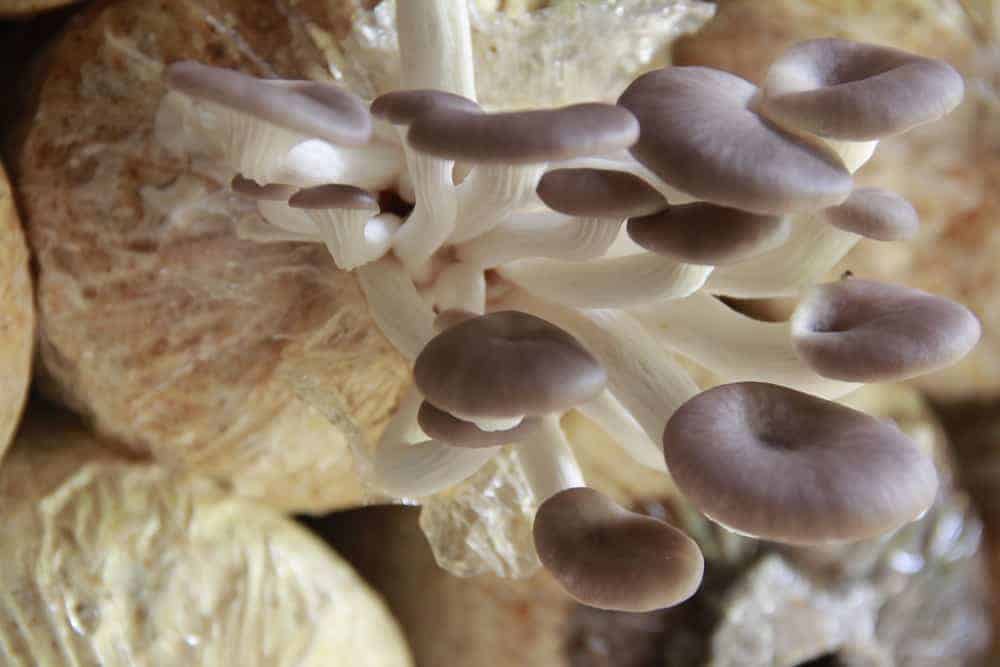
Aknowledged. Thanks to the owner